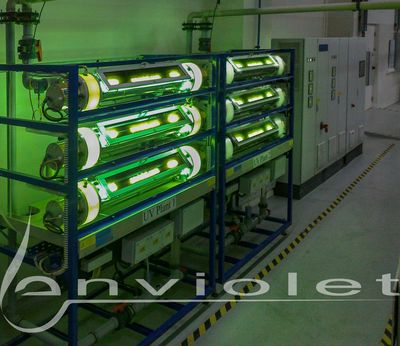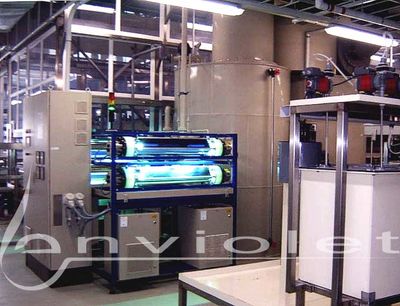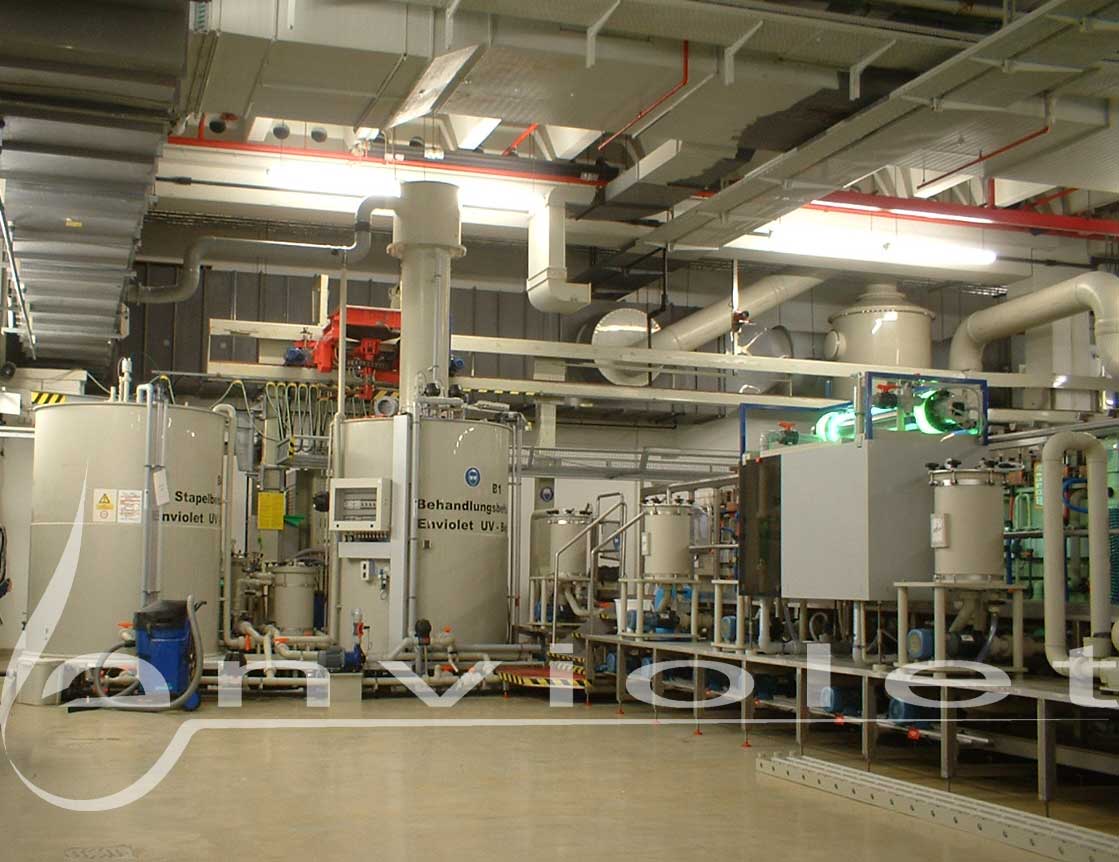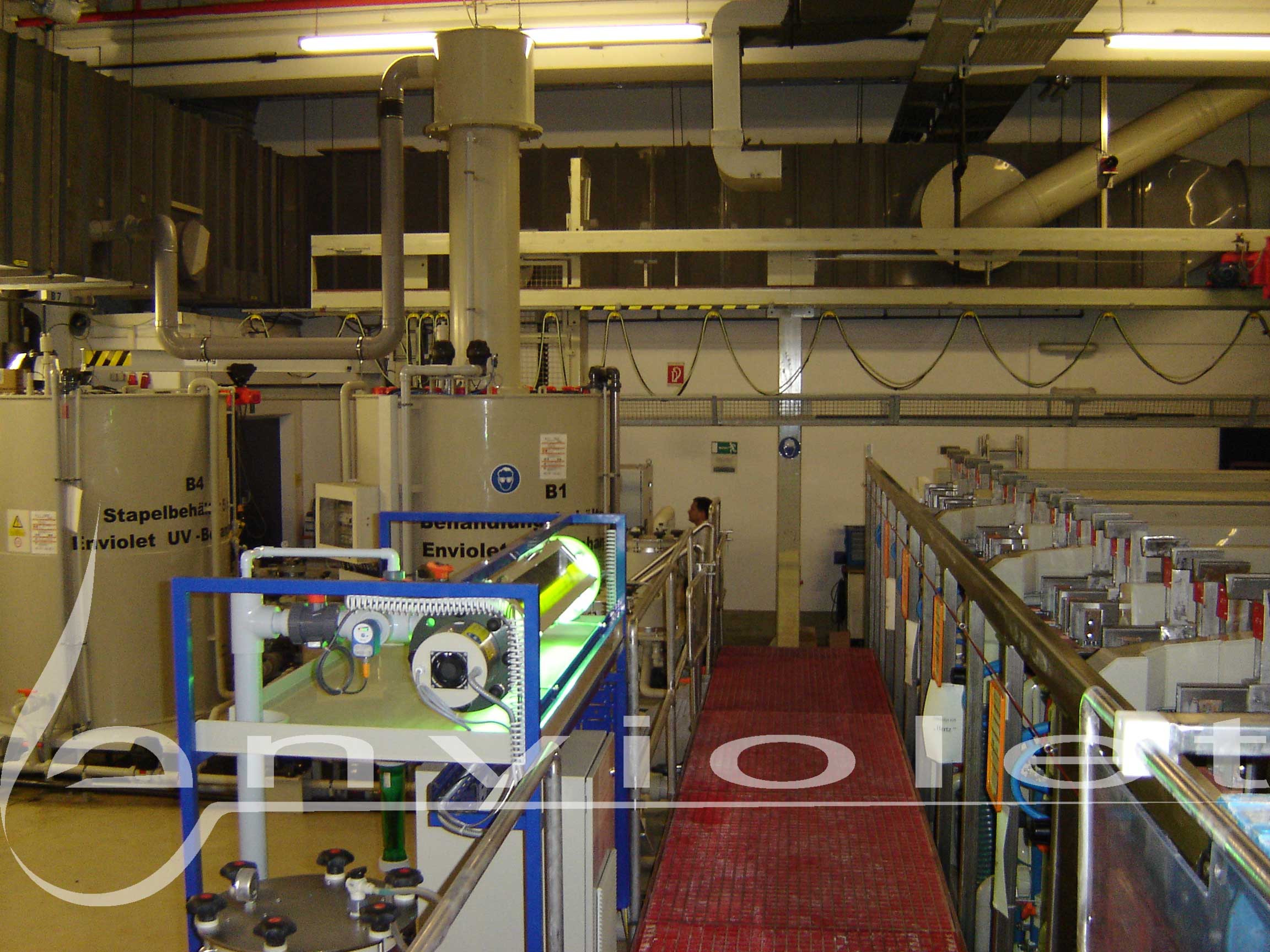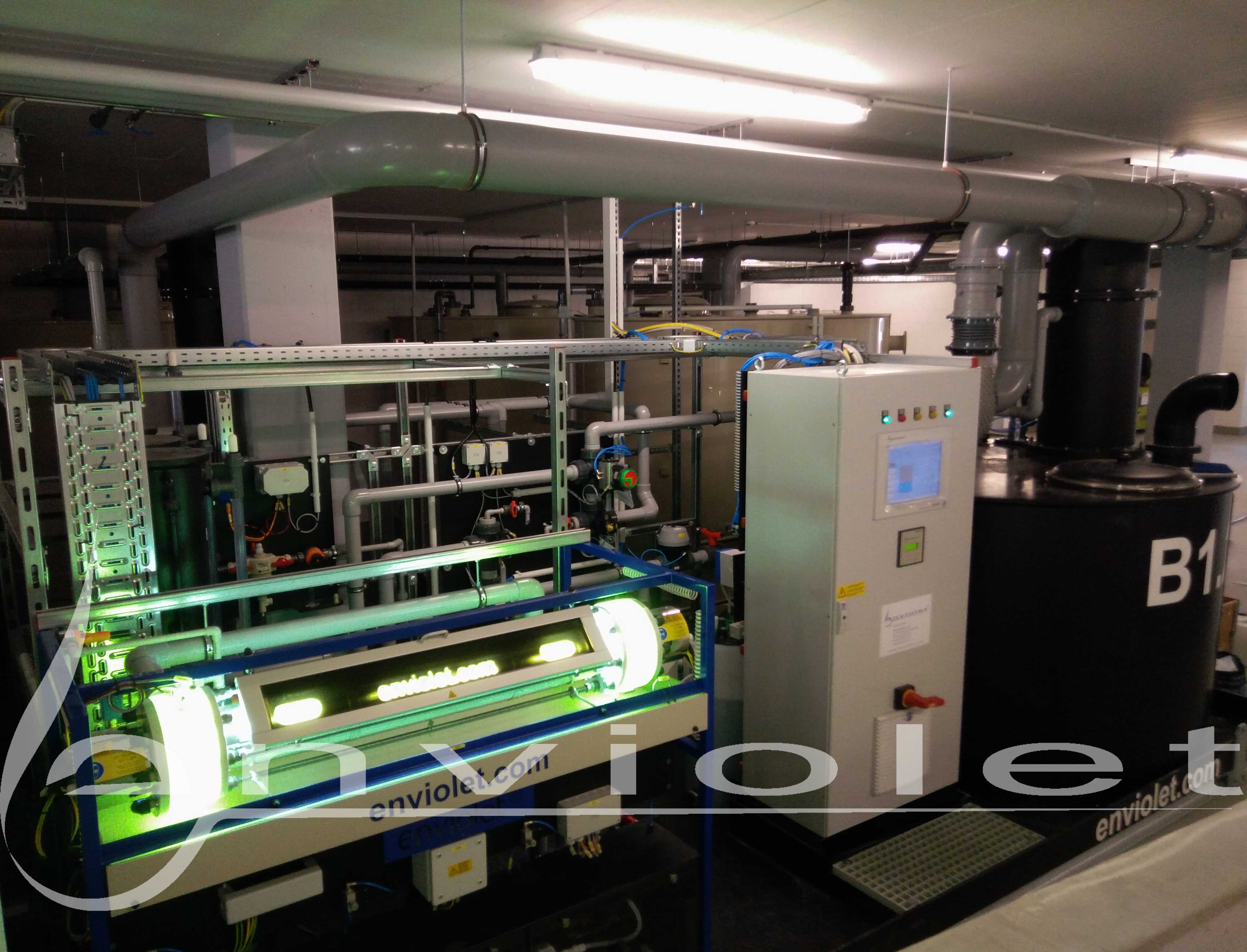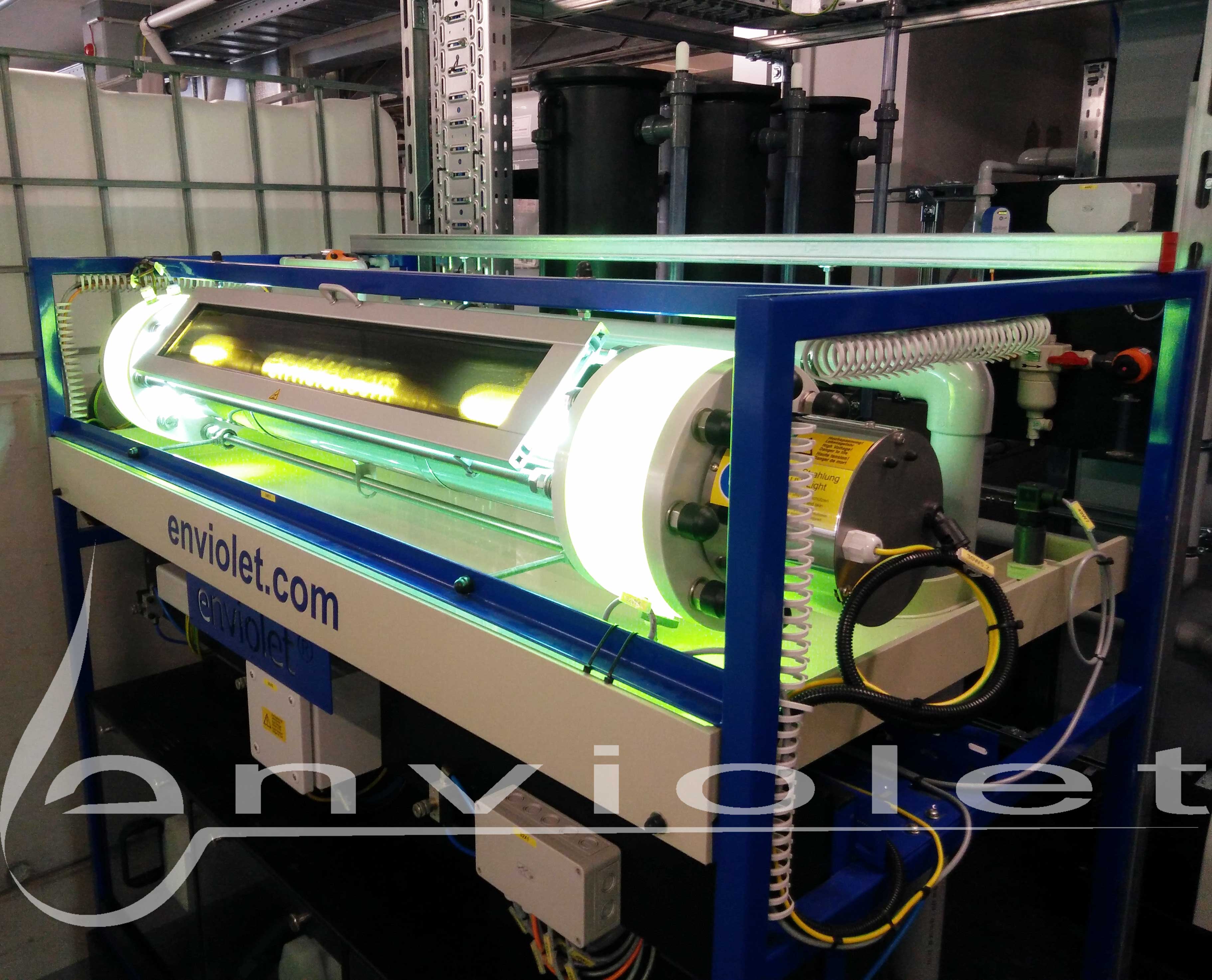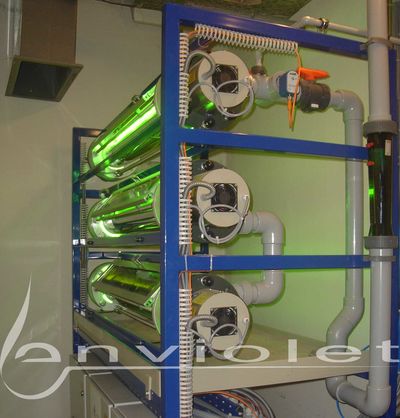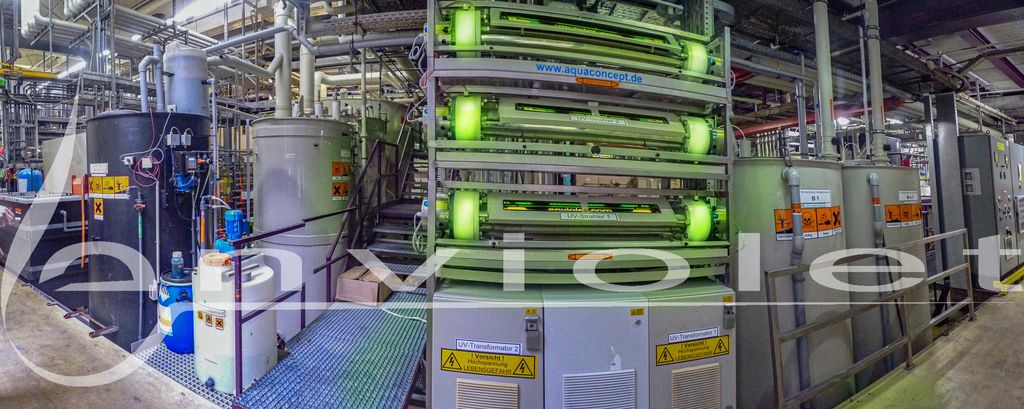uv reactors, photo-oxidation, advanced oxidation (aop), recycling & engineering
for industrial use
Electrolyte Recycling and Bath Conditioning
Sustainable maintenance of electrolytes in surface technology and PCB industry!
As the simplest and most effective method of bath recycling, the pure bath care by means of UV oxidation is available.
Organics are introduced in an electrolyte by introduction of substances into the electrolyte through production, or is formed by anodic oxidation of the organic bath additives themselves.
The UV oxidation of the electrolyte removes these organic compounds in the course of the treatment and puts the electrolyte back into the state of a new electrolyte.
In conjunction with the re-sharpening of the electrolyte, bath care by means of UV oxidation is able to permanently maintain the electrolytes at a high level of quality and counteracts aging effects.
The applications of electrolyte care are therefore usually in the range of very high technical or optical requirements of the galvanized surface.
With the UV evaporator, new bath is recovered from the rinsing water and the spent electrolyte.
During the bath care, reaction heat is produced by the UV oxidation of the impurities, which is used by means of a heat pump for the economic production of the concentrate (= new electrolyte) and of the distillate (= new rinse water). The distillate returns to the rinse process and the purified electrolyte concentrate is added to the bath. Thus, in addition to a purified new electrolyte, no wastewater is produced.
The treatment and maintenance of electrolytes with an Advanced Oxidation Process (AOP) is an improvement over the treatment with activated carbon commonly used in these areas and offers a number of advantages, such as the good reproducibility of the treatment outcome.
The UV-oxidation process offers sustainable electrolyte purification and bath care as well as the associated minimal waste with maximum product quality.
Further information on the chemistry of UV oxidation can be found on our homepage.
The first Enviolet® UV oxidation system for electrolyte maintenance was put into operation in May 1998 at Hansgrohe AG in the Schiltach plant to improve the deposition quality in Watts's bright nickel electrolyte.
The technique of UV oxidation of galvanic electrolytes has been permanently improved and has also been applied to the use of acid copper electrolytes (mainly pulse plating baths).
In 1999, the first unit for treatment of Cu-electrolytes went into operation and 2001 Samsung, as a leader in electronics could be acquired as a customer.
Since then, this technology has been successfully used in a variety of bath maintenance projects for Watts nickel baths and acidic copper baths, almost exclusively in high-tech applications.
Publications, case studies and references can be found in the section 'Plating Bath Conditioning and Electrolyte Recycling' in our publication list.
In order to best advise you in such applications based on a well-founded design basis, we offer individualized feasibility studies, which form the basis for our design of your system in this area.
At the same time we can provide samples of treated electrolytes if so desired.
Recycling of Copper Electrolytes
Effective conditioning of acid copper electrolytes for a high production and quality level!
In the manufacturing process of printed circuit boards, electrolytic copper plating plays an important role in reinforcing the printed conductors.
In addition to the inorganic salts such as copper sulfate, these baths also contain organic auxiliaries substances in order to deposit a high-quality metal surface with good throwing power.
During the copper plating in the galvanic bath caused by the electro-chemical oxidation and reduction of a variety of organic substances, some of which cause significant side effects, are generated.
These side effects cause the performance of the baths to deteriorate and more coating defects to occur.
Usually this problem is approached by stronger rinsing in conjunction with a regular treatment of the bath with activated carbon, and if that no longer helps the spent electrolyte is disposed.
The increased rinsing leads to an increase in the volume of wastewater. The activated carbon treatment does not reproducibly lead to the desired success and also generates considerable costs through the disposal of the loaded activated carbon and the costs of a new bath go beyond this again.
In a UV oxidation plant, the organics in a galvanic process baths can be mineralized by the application of our photo-oxidation process, so that after the UV treatment and bath care of the old electrolyte again a basically new electrolyte of the highest quality is available.
The treated electrolyte can be returned to the production bath after adjusting the organic parameters. By applying this process a consistently high bath quality (throwing power, leveling, ...), can be ensured and reject rate can be minimized.
Advantages of bath recycling with an AOP (extended UV oxidation) versus combination of hydrogen peroxide and activated carbon:
- Preservation of throwing power (quality)
- no or little disposal of spent bath (environment)
- fast availability (capacity)
- applicable to all available bath-types on the market (flexibility)
- reproducible, good treatment result (production safety)
- high degree of automation (expense, safety)
Recycling of Nickel Electrolytes
Continuous maintenance of Watts Ni-baths to reduce waste and improve quality!
In addition to the basic chemicals (Watts' basic solution) galvanic nickel electrolytes contain organic additives, which are supposed to ensure a high-gloss and ductile deposition quality of the product under defined process conditions. These organic additives (brighteners, wetting agents, levelers, etc.) are affected during the operation of the electrolyte by a variety of electrochemically induced reactions and must therefore be replaced. The decomposition products remain in the solution except for the part, which is discharged with the goods. This increases the sum of the dissolved organic ingredients, a parameter that is best measured with the TOC value (Total Organic Carbon). In addition, a further and not insignificant proportion of the particularly harmful disruptive substances is introduced into the electrolyte by the treated goods, which also deteriorates the quality of the electrolyte.
By means of an enviolet UV-oxidation, the surfactants are destroyed in the first part of the oxidation and after that the grinding and polishing agents dissolved in the electrolyte are eliminated.
In the subsequent stages of UV oxidation treatment, the TOC is gradually oxidized to mineralization to obtain a fresh base of Watts electrolyte.
Features of Advanced UV Oxidation Treatment:
- High savings potential through good utilization of the gloss-forming organic components of the electrolyte
- Significantly reduced effort for mechanical pretreatment (grinding, polishing)
- no or little disposal of spent electrolyte (environment)
- fast availability (capacity)
- applicable to all available bath types on the market (flexibility)
- reproducible, good treatment result (production safety)
- high degree of automation (expense, safety)
Another advantage of the UV oxidation technique is that excesses from the bright nickel range (calving of the baths) after the treatment can also be used in semi-gloss or matt nickel, since saccharin can also be eliminated by UV oxidation.








